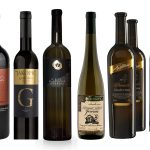“Not a lot of sweet, predicate wines from Graševina will be sold, but they need to exist to show the potential of the variety,” said Jo Ahearne, a Brit with the Master of Wine title, held by only 355 people in the world, with another 340 in long-term education. Joanne Ahearne lives on Hvar and makes wines from Darnekuša and Plavac, while recently at the International Conference on Graševina she led a workshop devoted to various wine styles which this most-cultivated Croatian variety can give.
“I love the elegance of Graševina. It exists in all the wines I’ve tasted. It is a fantastic variety that promises, but we need to work hard for the world to recognise it,” she warned.
She said of the Brut sparkling wine by Goran Josipović from Bektež near Kutjevo that its sweetness will make many like it. She also described the Liska Graševina 2016 from the Ilok winery Buhač as a young wine consumed due to its freshness, not the variety or vineyard it comes from. And it was the vineyard that defined the Graševina Premium 2013 by Jasna Antunović from Dalj.
“It is a wine of terroir, riper and with a fuller body for those who want to explore. A wine that demands concentration and fits many dishes,” she described the regular harvest Graševina, but macerated and then aged for 20 months in the barrel. She had special words for the late harvest Graševina 2017 by Slavko Kalazić from Baranja.
“Strange, eccentric. I like the aromas of white pepper and orange peel. Part of the sommeliers will surely ‘click’ with the wine as it is different. It won’t have many fans, but they will be very devoted,” she said of the semi-dry wine which pushed the story of Graševina to where not many are used to, but that also shows what the variety can give. Kalazić also offered an excellent young, lively and salty Graševina with a lively and salty tasty which lingers long.
Standing out at the workshop on Croatian Graševinas, besides the Great Harvest 2011 by Ilok Cellars, was the Graševina Mitrovac 2015 by Ivica Perak. It has an opulent scent and fresh taste which tingles in the mouth for a long time. It costs 45 kuna, so the advice is “buy and keep!”
Hungarians in the Csopak wine region along the Balaton Lake also have a code on producing Olaszrizling, as they call Graševina. Vines need to be 10 years old, protection is ecological, and yield per vine a kilogramme and a half. The alcohol in wine needs to be between 12 and 13 percent, residue sugars up to four, and acids at least 5.5 grams per litre. A wine made by that code, Slikker 2015 by the Szent Donát Birtok winery was fine, with a full body, refreshing, but also with a serious price, 18 euro per bottle.
Among the eight Slovenian and Austrian Graševinas, the most impressive were the biodynamic Laški Riesling Demeter 2013 by the Steiermark winery Zorjan and the unfiltered Laški Riesling Bodonci 2012 by the Marof winery from Prekmurje.
Serbians presented the story “Return of the Grašac,” the name pushing out the Italian Rielsing in their area. The Kiš winery bottled the 2013 harvest under that name and the wine sold better under the new name. Their 2016 harvest is also fine. Grašac is their most-cultivate variety, although grown only on Fruška Gora. And excellent impression also came from the 2013 Grašac by the Molovin winery from Šid. Their vineyard is alongside the Ilok Principovac, on the other side of the border, and the wine is a typical scented, ripe Ilok Graševina.
For the original and more from Vino.hr blog on wine, click here.











